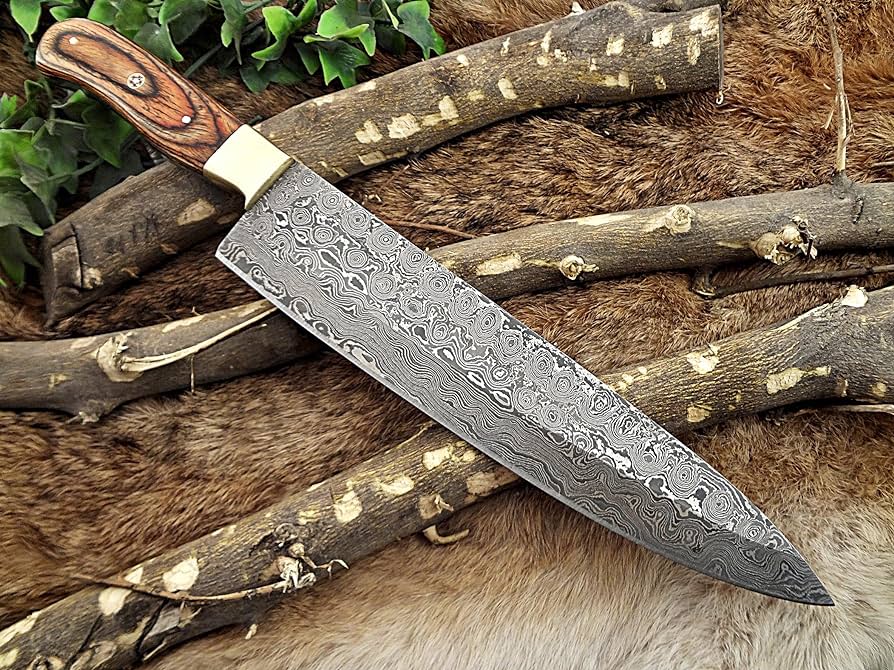
Damascus Knives
Introduction
In the world of cutlery, few blades carry the mystique and craftsmanship of Damascus knives. These exquisite blades have a rich history dating back centuries, with a legacy that continues to captivate knife enthusiasts and artisans alike. Join us on a journey through the annals of history as we explore the origins and historical significance of Damascus steel and how it has evolved over the centuries. And, of course, we’ll also discover the allure of the Damascus knife shop where these remarkable creations find their home.
The Birth of Damascus Steel
The origins of Damascus steel are shrouded in the mists of time, but it is believed to have first emerged in India and the Middle East around 300 BCE. The secret to its exceptional quality lay in the unique way it was forged and tempered. Early Damascus knife steel was renowned for its distinctive wavy patterns, exceptional sharpness, and durability, making it the weapon of choice for warriors and hunters.
Legends and Myths
Damascus steel earned legendary status during the Middle Ages. One of the most famous tales is of Saladin, the great Muslim warrior and sultan of Egypt and Syria, who possessed a Damascus sword said to be so sharp it could split a hair in midair. These swords were highly sought after, and their reputation for cutting power and resilience spread far and wide.
The Mysterious Crafting Process
What set Damascus steel apart was the meticulous craftsmanship that went into its creation. Smiths of the time used a process known as pattern welding, where layers of iron and steel were repeatedly folded and welded together. This created a blade with a unique grain pattern, similar to wood grain. The carbon nanotubes formed in the steel during this process gave the blade its exceptional hardness and flexibility.
The Decline and Resurgence
The production of traditional Damascus steel declined in the 18th century due to changes in available materials and production techniques. However, the legacy of Damascus steel lived on, and in the late 20th century, modern metallurgists and blacksmiths began to rediscover the art of crafting these remarkable blades.
Modern Damascus Knives
Today, Damascus knives continue to be revered for their beauty, sharpness, and craftsmanship. They are used not only as weapons but also as kitchen knives, hunting knives, and collector’s items. Modern Damascus knives often blend the traditional techniques with modern materials, such as high-carbon stainless steel, to create blades that are not only functional but also stunning works of art.
Visiting a Damascus Knife Shop
If you’re captivated by the allure of Damascus knives, a visit to a specialized knife shop is a must. These establishments often house an impressive array of handcrafted knives, each with its own unique pattern and character. Expert artisans and knife enthusiasts can guide you through the world of Damascus steel, explaining the intricate craftsmanship that goes into each blade.
The Damascus knife shop is a sanctuary for knife connoisseurs, where you can witness the fusion of tradition and innovation. Here, you’ll find blades that bear the marks of skilled artisans who have dedicated their lives to perfecting their craft. Each knife tells a story, a testament to the dedication and passion of those who forge them.
As you step into a Damascus knife shop, you’ll be greeted by the sight of gleaming blades, some with intricate patterns reminiscent of flowing water or swirling clouds. The layers of steel create a visual masterpiece that is as much art as it is a tool. You’ll have the opportunity to touch and feel the weight and balance of these knives, appreciating the craftsmanship that goes into every detail.
Conclusion
Damascus knives are more than just tools; they are a testament to human ingenuity and craftsmanship. From their ancient origins to the modern-day revival, these blades have left an indelible mark on history. Whether you’re a collector, a chef, or simply someone who appreciates the beauty and utility of fine blades, Damascus knives offer a timeless connection to a bygone era and a legacy that continues to shine brightly in the world of cutlery.
So, the next time you’re near a Damascus knife shop, step inside and let the history and artistry of these blades enchant you. It’s a journey through time and craftsmanship that you won’t soon forget, and perhaps, you’ll find the perfect Damascus knife to become a cherished part of your own story.



